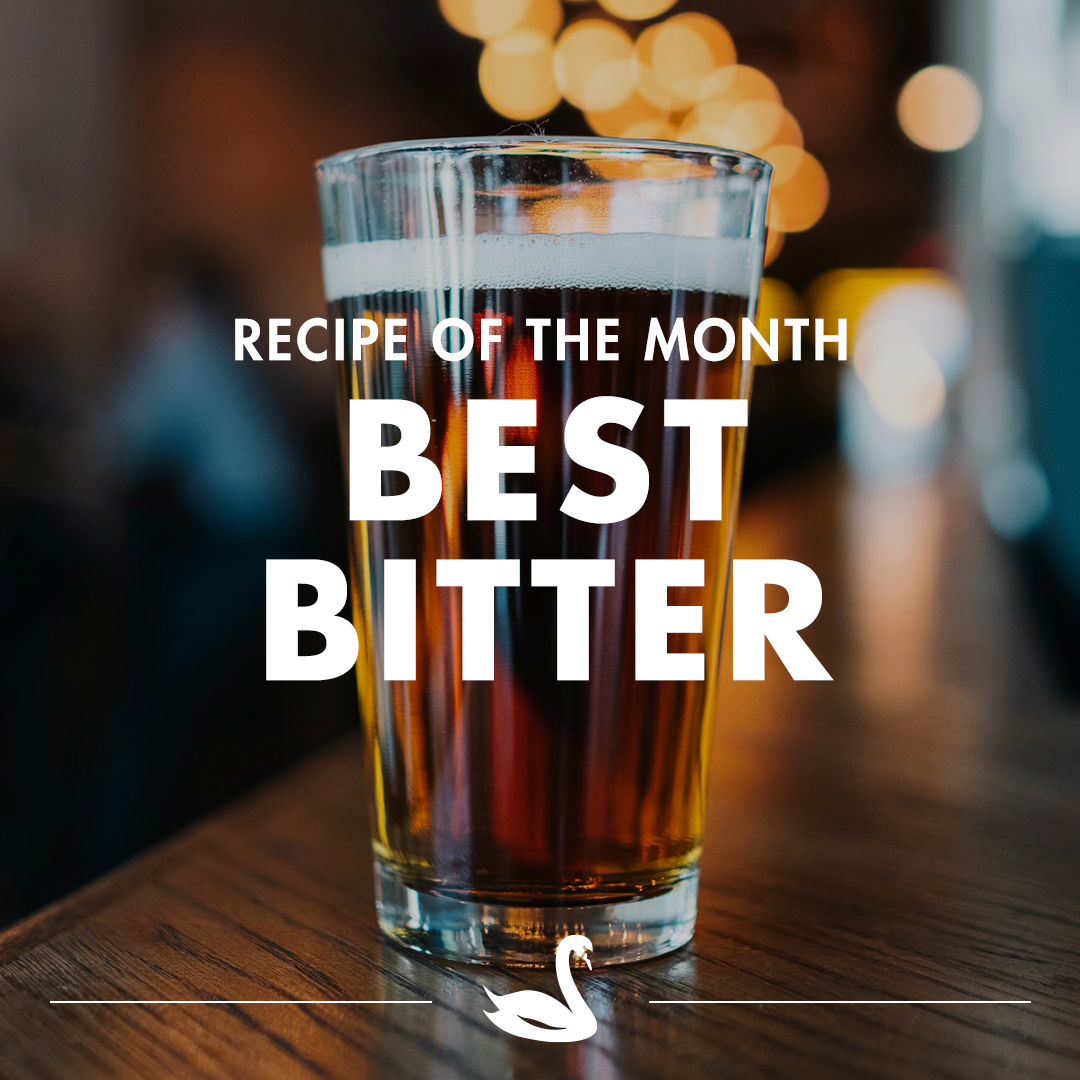Recipe of the month – Best Bitter

You may have already read our latest article about crystal malts on our blog. To keep the focus on these malts the recipe of this month is a traditional English style ale, that relies on various crystal malts.
British bitters emerged from English Pale Ales in the late 1800’s. They have been mainly served as drought beers, very fresh, without any pressure (usually with a hand pump) at cellar temperatures. In the 1920’s and 30’s the use of crystal malts became more widespread and Bitters developed to a more complex and palatable style. Today numerous variations of Bitter exist, from darker, sweeter versions served with almost no head to brighter, hoppier, paler examples with decent foam stands. We brought you a recipe for Best Bitter (also known as Special or Premium Bitter), that is in the middle of the “Bitter range”. It’s more flavourful than Ordinary Bitters, but not as complex as Extra Strong Bitters. In general Best Bitter is a stronger and hoppier type of Bitters, that should be firmly bitter without overwhelming the maltiness.
Grain bill: Pale Ale malt is the key component of any bitter recipe. To have a full malt backbone I would add ~10% of crystal malt, keeping in mind that darker crystal will give the caramel and toasty tones while lighter crystal malt will give sweeter caramel character. I like to use some Biscuit malt to give a crispy hint. A moderate one-step mash around 152 °F (67 °C) should be great for this style.
| The Swaen Malt | Color | Quantity | Ratio | ||
| Swaen©Ale | 7 EBC | 2,6 lov | 3,5 kg | 7,7 lbs | 84% |
| GoldSwaen©Red | 50 EBC | 19 lov | 0,3 kg | 0,66 lbs | 7% |
| GoldSwaen©Brown | 220 EBC | 83 lov | 0,2 kg | 0,44 lb | 5% |
| BlackSwaen©Biscuit | 80 EBC | 30 lov | 0,15 kg | 0,33 lb | 4% |
Hops: Hop bitterness and flavour should be noticeable, but should not fully dominate malt flavours. Not surprisingly traditional English style varieties are recommended.
| Variety | Quantity | Lenght | Alpha acid | IBU | |
| Challenger | 14 g | 0,5 oz | 60 min | 9% | 18 |
| East Kent Goldings | 28 g | 1 oz | 20 min | 4,5% | 11 |
| East Kent Goldings | 28 g | 1 oz | 5 min | 4,5% | 4 |
Yeast: As for fermentation feel free to try the most suitable yeast from our Birdy’s webshop: the Gozdawa ‘Withbread’ (Original British Ale Yeast 04). It’s a famous UK origin yeast strain, applied for the top fermentation beers with neutral final aroma.
| Temperature | Optimal temperature | Attenuation | Flocculation | Alcohol tolerance |
| 15-22⁰C | 16-19⁰C | max. 75% | high | up to 10% |
Results:
|
Batch size: 19 l (5 gallon) Efficiency: 70 % OG: 1,044 FG: 1,010 ABV: 4,5% Bitterness: 32 IBU Colour: 11 SRM Carbonation: 1,8 pH: 5,2 (adjusted by 1 tsp citric acid) |
Appearance: Orange colour, creamy foam.
Taste: Great introduction and balance of English style malts and hops.
Food pairing: BBQ, burgers, English pub dishes.